Tamarisk or Salt Cedar
Latin Name : Tamarix tetrandra
Tamarix pentandra
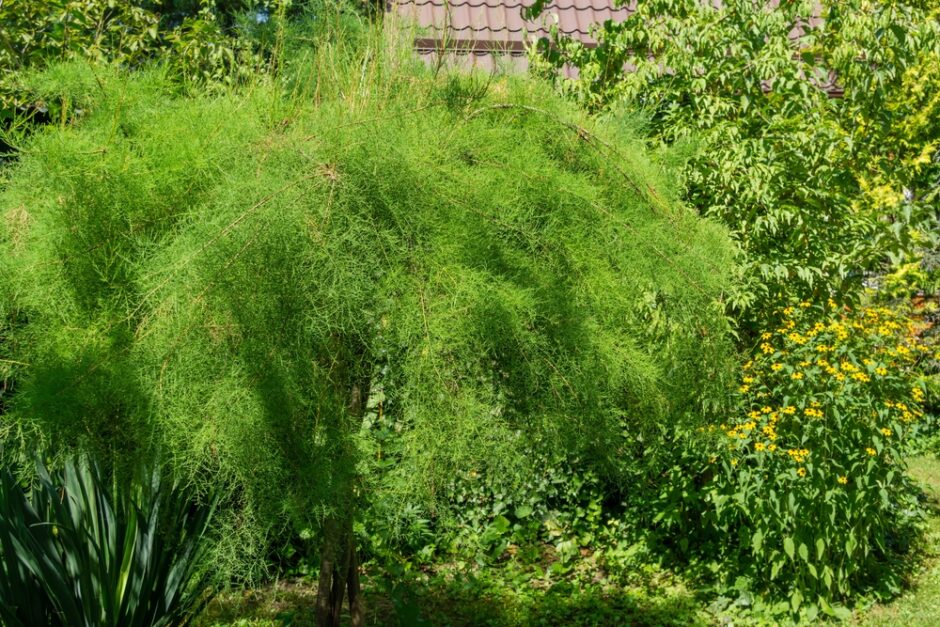
The Tamarisks are large feathery deciduous shrubs or small trees whose foliage is deceptively conifer-like and needs full sun to thrive. They aquired the common name of Salt Cedar because, amongst their many other characteristics, they do very well by the sea. Hailing from New Zealand, and introduced in the early 1800s, there are two species that are commonly planted, Tamarix tetrandra and Tamarix pentandra. These two species look fairly similar, but they flower at different times in the year.
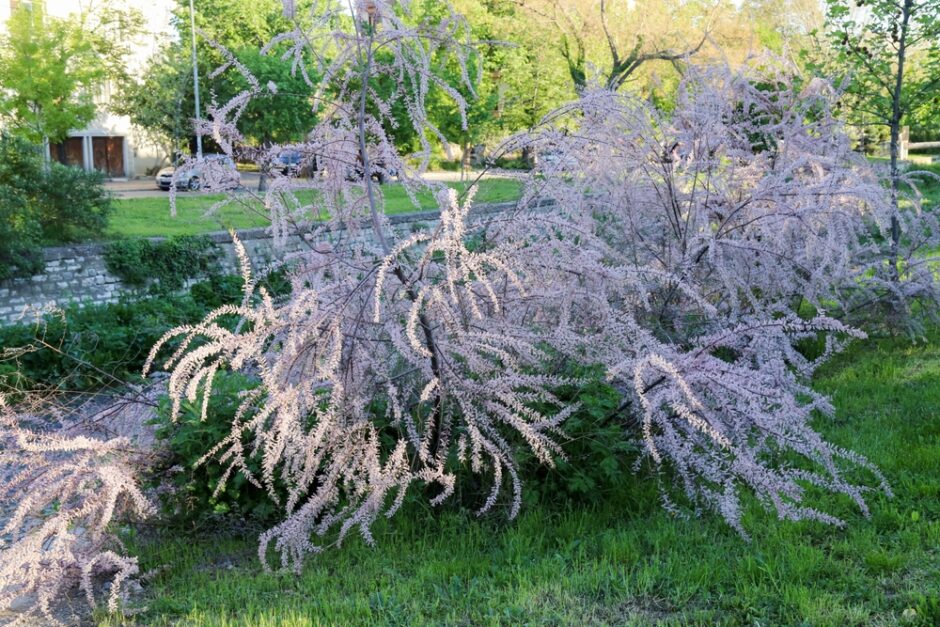
This is Tamarix tetrandra. It is a large, loose shrub with pale pink flowers that appear in May or early June.

The flowers come on the long, sweeping growth that grew last year. As such, it should be pruned immediately that it has finished flowering so that it can produce new growths this year upon which it will flower next year.
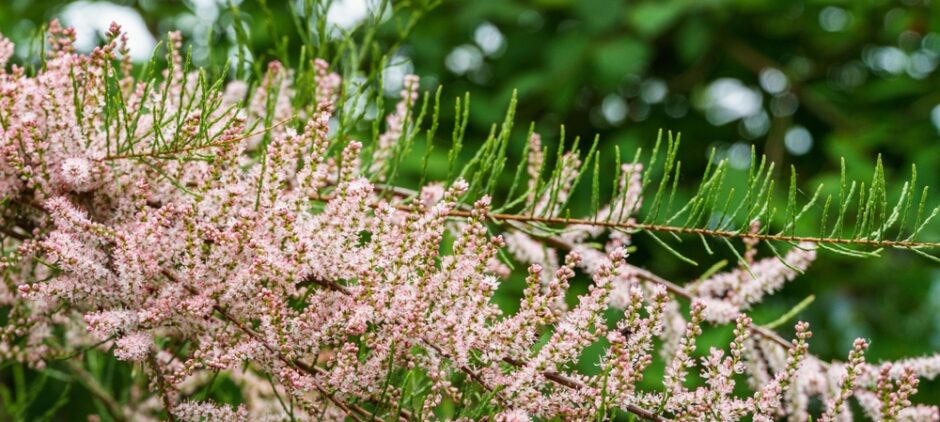
This image gives an idea of both flower and foliage together …
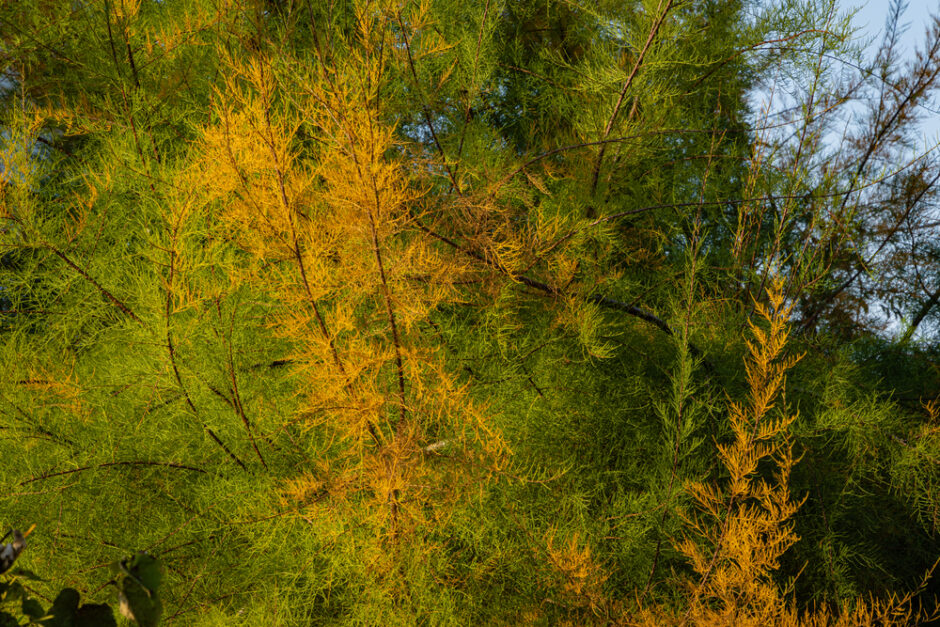
… and this one of the autumn colour you might expect when the time comes.
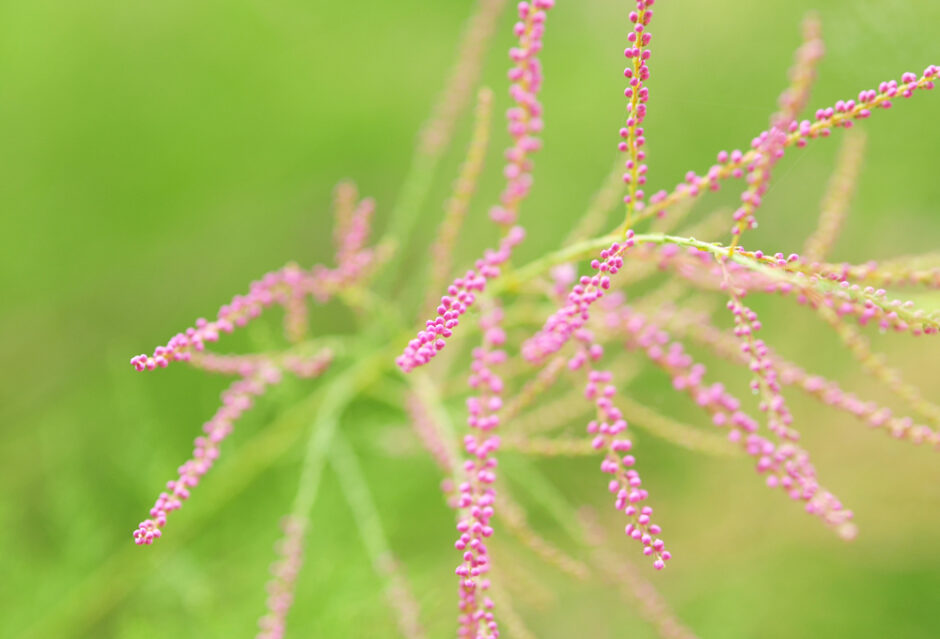
This is Tamarix pentandra, with these young shoots which have grown this year producing the slightly deeper pink flowers as they grow.
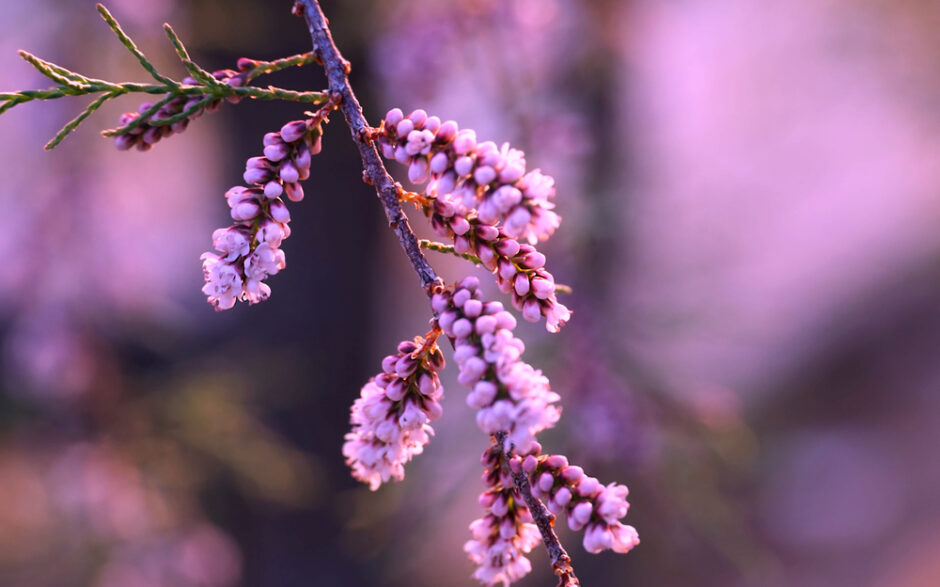
As we can see, this is a much deeper pink and as such will serve you well in working out at a glance which Tamarisk it must be. Flowering much later in the summer on the current seasons growth, it can be pruned at the early part of the year, at winter’s end. It will then grow away vigorously and produce lots of fresh growth and the associated late summer flower.
